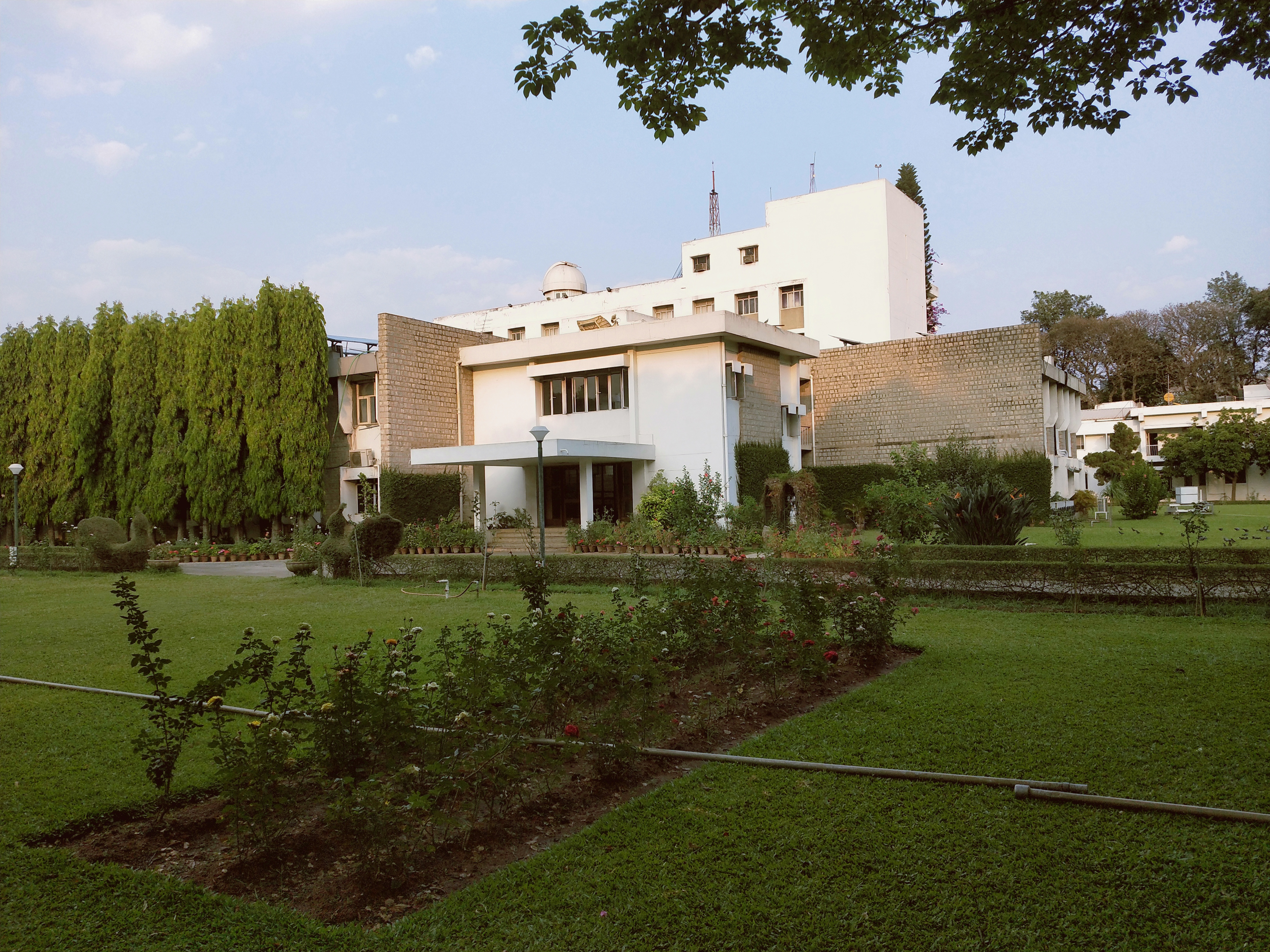|
Indian Institute Of Astro-Physics
The Indian Institute of Astrophysics (IIA), with its headquarters in Bengaluru, is an autonomous research institute wholly funded by the Department of Science and Technology, Government of India. IIA conducts research primarily in the areas of astronomy, astrophysics and related fields. The institute has a network of laboratories and observatories in India, including Kodaikanal (the Kodaikanal Solar Observatory), Kavalur (the Vainu Bappu Observatory), Gauribidanur (the Gauribidanur Radio Observatory), Hanle (the Indian Astronomical Observatory) and Hosakote. IIA contributed to Astrosat, India's first dedicated multi-wavelength space observatory. The Astrosat project is a collaborative effort of many different research institutions from India. The institute led the development of Ultra-Violet Imaging Telescope (UVIT). Areas of research Researchers at IIA work on a diverse set of topics related to Astronomy and Astrophysics. However, the research can be broadly classified ... [...More Info...] [...Related Items...] OR: [Wikipedia] [Google] [Baidu] |
Research
Research is creative and systematic work undertaken to increase the stock of knowledge. It involves the collection, organization, and analysis of evidence to increase understanding of a topic, characterized by a particular attentiveness to controlling sources of bias and error. These activities are characterized by accounting and controlling for biases. A research project may be an expansion of past work in the field. To test the validity of instruments, procedures, or experiments, research may replicate elements of prior projects or the project as a whole. The primary purposes of basic research (as opposed to applied research) are documentation, discovery, interpretation, and the research and development (R&D) of methods and systems for the advancement of human knowledge. Approaches to research depend on epistemologies, which vary considerably both within and between humanities and sciences. There are several forms of research: scientific, humanities, artistic, eco ... [...More Info...] [...Related Items...] OR: [Wikipedia] [Google] [Baidu] |
Gauribidanur Radio Observatory
The Gauribidanur Radio Observatory is a radio telescope observatory located at Gauribidanur, near Bengaluru. It is operated jointly by Raman Research Institute and the Indian Institute of Astrophysics. The observatory has been in operation since 1976. Location The Gauribidanur Observatory is located at Gauribidanur in Chikkaballapur district(Latitude:13.60° N; Longitude:77.44° E), 100 km north of Bengaluru. Science and observation The Observatory has been used for studying various aspects of the Sun, galaxies and pulsars. A few observations with the array have been the first two-dimensional images of radio emission from slowly varying discrete sources in the outer solar corona, an all-sky survey of radio sources at 34.5 MHz in the declination range -30° S to 60° N, and a low frequency carbon recombination lines in astrophysical sources. Studies have also been done of gaseous remnants of exploding stars and the apparently vacant space between members of a cluster of ... [...More Info...] [...Related Items...] OR: [Wikipedia] [Google] [Baidu] |
British East India Company
The East India Company (EIC) was an English, and later British, joint-stock company that was founded in 1600 and dissolved in 1874. It was formed to Indian Ocean trade, trade in the Indian Ocean region, initially with the East Indies (South Asia and Southeast Asia), and later with East Asia. The company gained Company rule in India, control of large parts of the Indian subcontinent and British Hong Kong, Hong Kong. At its peak, the company was the largest corporation in the world by various measures and had its own armed forces in the form of the company's three presidency armies, totalling about 260,000 soldiers, twice the size of the British Army at certain times. Originally Chartered company, chartered as the "Governor and Company of Merchants of London Trading into the East-Indies," the company rose to account for half of the world's trade during the mid-1700s and early 1800s, particularly in basic commodities including cotton, silk, indigo dye, sugar, salt, spices, Potass ... [...More Info...] [...Related Items...] OR: [Wikipedia] [Google] [Baidu] |
William Petrie
William Petrie (1747 – 27 October 1816) was a British officer of the East India Company in Chennai (formerly Madras) during the 1780s, and was Governor of Prince of Wales Island (Penang Island) from 1812 to 1816. An amateur astronomer, Petrie helped found the first modern observatory outside Europe, the Madras Observatory. Life East India Company career The chronology of his advancement through the Honorable East India Company is as follows: * 1765 - Writer * 1771 - Factor * 1774 - Junior Merchant * 1776 - Senior Merchant; At Home * 1778 - In India * 1782 - At Home * 1790 - Member of the Council of the Governor * 1793 - At Home * 1800 - President of the Board of Revenue, and Member of the Council of the Governor * 1809 - Appointed Governor of the Prince of Wales Island * Died 27 October 1816, at Prince of Wales Island. Astronomy In 1786, Petrie set up a private observatory as a geographical and navigational aid in his residence in Egmore, Chennai, India,Cited by Ragh ... [...More Info...] [...Related Items...] OR: [Wikipedia] [Google] [Baidu] |
Space Astronomy
Astronomy is a natural science that studies celestial objects and the phenomena that occur in the cosmos. It uses mathematics, physics, and chemistry in order to explain their origin and their overall evolution. Objects of interest include planets, moons, stars, nebulae, galaxies, meteoroids, asteroids, and comets. Relevant phenomena include supernova explosions, gamma ray bursts, quasars, blazars, pulsars, and cosmic microwave background radiation. More generally, astronomy studies everything that originates beyond Earth's atmosphere. Cosmology is a branch of astronomy that studies the universe as a whole. Astronomy is one of the oldest natural sciences. The early civilizations in recorded history made methodical observations of the night sky. These include the Egyptians, Babylonians, Greeks, Indians, Chinese, Maya, and many ancient indigenous peoples of the Americas. In the past, astronomy included disciplines as diverse as astrometry, celestial navigation, observational a ... [...More Info...] [...Related Items...] OR: [Wikipedia] [Google] [Baidu] |



